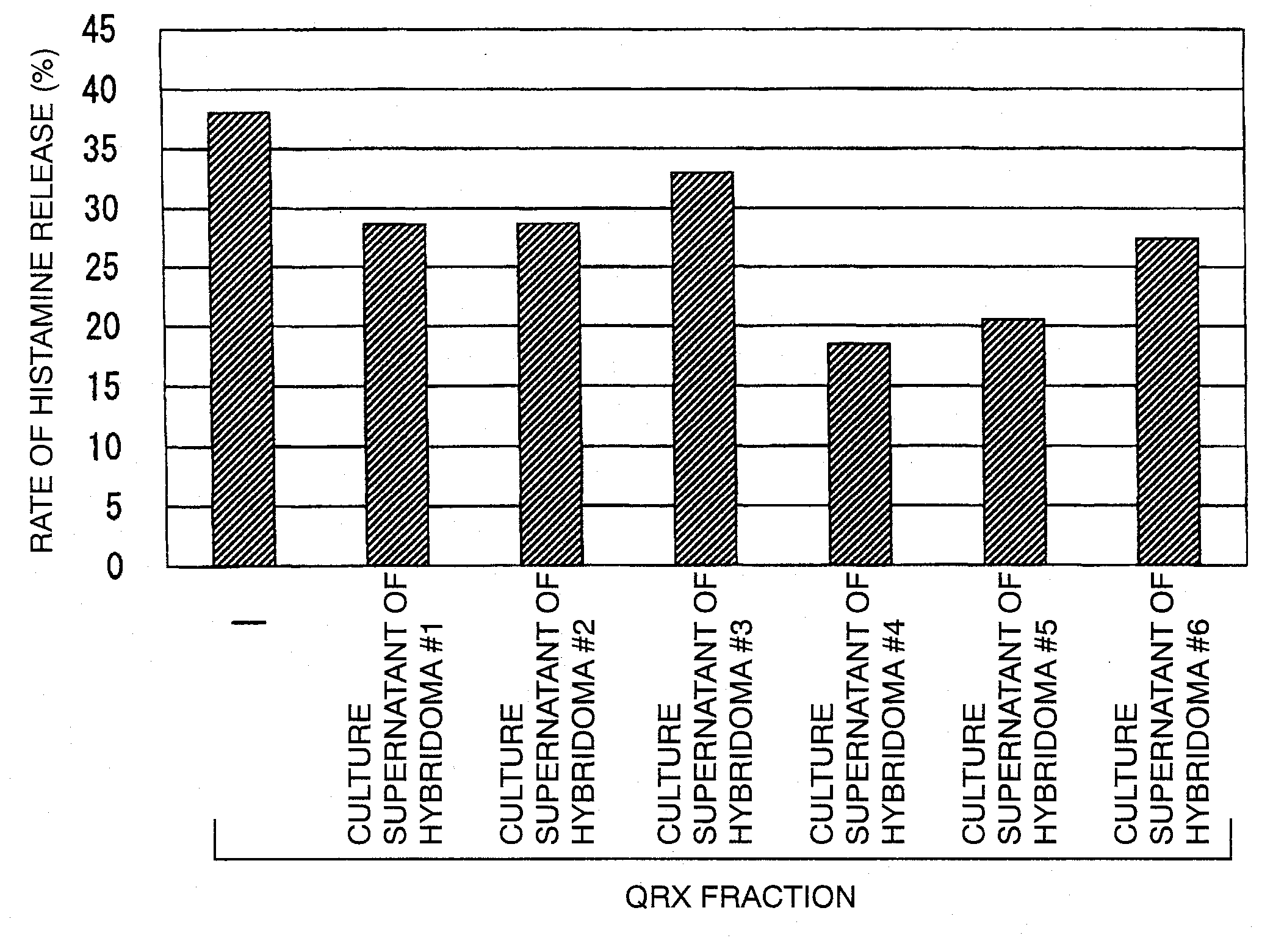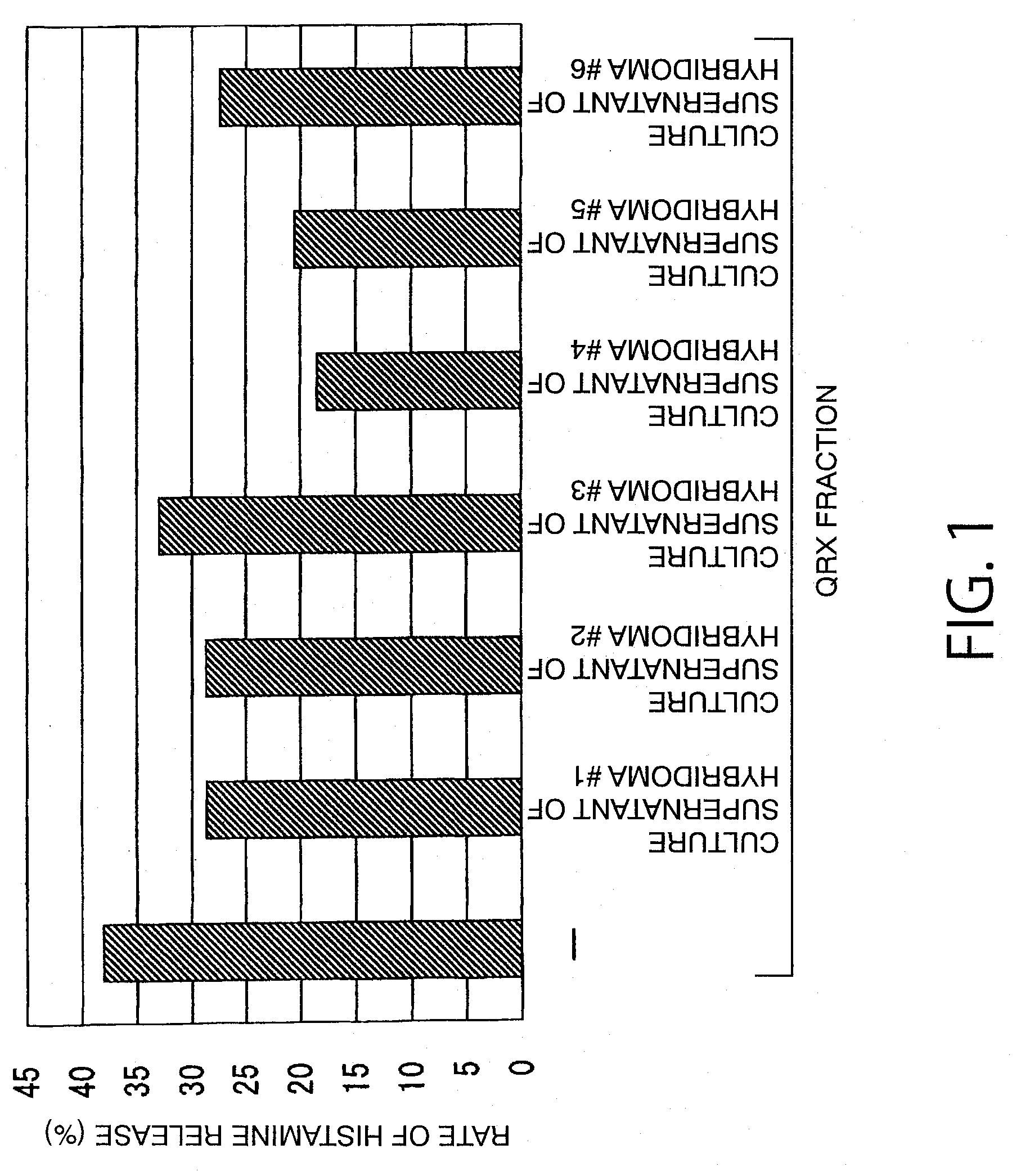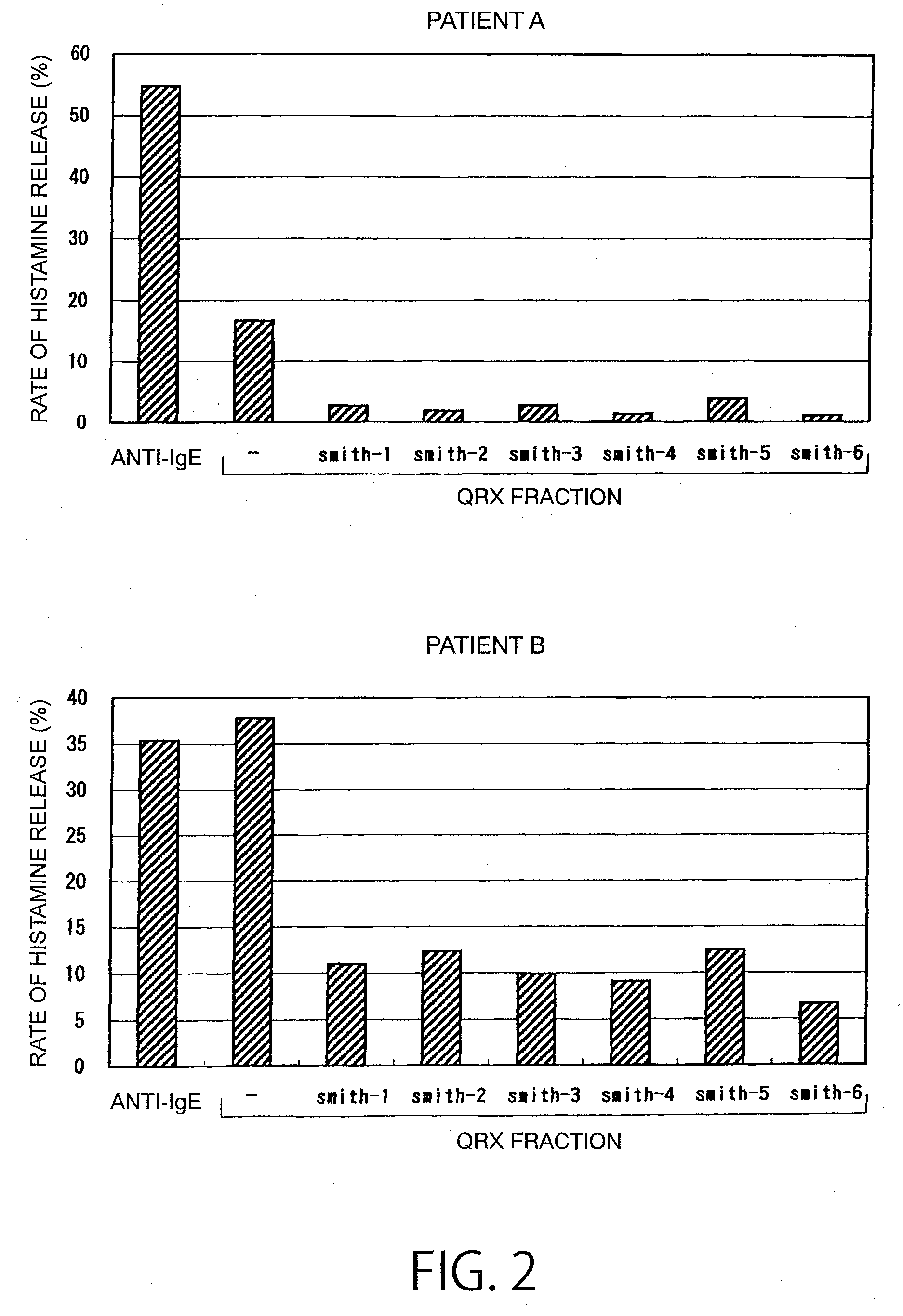Anti-sweat antigen monoclonal antibody
a monoclonal antibody and sweat antigen technology, applied in the field of monoclonal antibodies against sweat antigen compositions, can solve the problems of undetermined treatment methods, drug compositions, and drug interactions, and achieve the effects of inhibiting histamine release, high sensitive detection of sweat antigens, and advantageously convenient us
- Summary
- Abstract
- Description
- Claims
- Application Information
AI Technical Summary
Benefits of technology
Problems solved by technology
Method used
Image
Examples
example 1
Preparation of Purified Fraction Non-Adsorbed on Anti-Human Cystatin A Column
1-1. Preparation of Concentrated Sweat
[0154]Human sweat was passed through 100-μm and 70-μm mesh filters (Nylon Cell Strainer, BD Falcon) to remove insoluble matter. Then, precipitates were further removed using a 0.22-μm filter (Bottle Top Filter, 1 L, Corning Inc.). 4 L of the sweat thus filter-filtrated was concentrated into approximately 150 mL by ultrafiltration (3000 M.W. cut) and used as a material for sweat antigen purification.
1-2. Separation Using Anion-Exchange Column
[0155]75 mL of concentrated sweat adjusted to pH 8.0 was loaded onto an anion-exchange column MonoQ 10 / 100 GT (GE Healthcare Biosciences) equilibrated in advance with 10 mmol / L Tris-HCl (pH 8.0), followed by elution with an NaCl concentration gradient of 0 to 1.0 M in 10 mmol / L Tris-HCl (pH 8.0). AKTA explorer (GE Healthcare Biosciences) was used as a chromatographic apparatus for purification.
[0156]In order to select a fraction cont...
example 2
Preparation of Monoclonal Antibody
2-1. Immunization of Mice
[0168]The antigen fraction prepared in Example 1 was concentrated into 50 μL using a centrifugal concentrator (Pall Corp.; Nanosep; 3000 MWCO). A 20 μL aliquot thereof was mixed with the same amount of a Freund's complete adjuvant and injected for immunization to the hind footpads of 8-week-old female BALB / c mice. 7 and 19 days later, the mice were boosted with the same amount of the sweat antigen using a Freund's incomplete adjuvant. 3 days after the third booster, popliteal lymph nodes were collected and used as materials for cell fusion.
2-2. Cell Fusion
[0169]From the popliteal lymph nodes extirpated 3 days after the final immunization from the immunized mice, a suspension of lymph node cells was prepared using an RPMI medium. The obtained 9.9×107 cells were mixed with 1.98×107 mouse myeloma cells (P3U1 strain) and centrifuged, followed by cell fusion using an electric cell fusion machine (Shimadzu Corp.; SSH-2 somatic Hyb...
example 3
Reaction of QRX Fraction with Monoclonal Antibody
3-1. Purification of Sweat Antigen Using Monoclonal Antibody
[0179]A substance having histamine releasing activity was purified from sweat antigen samples using a monoclonal antibody-immobilized affinity carrier.
[0180]The purified monoclonal antibodies (smith-1 to smith-6) were dialyzed (3500 MWCO) against PBS (−). Each antibody corresponding to 0.5 mg was added to 0.7 mL of NHS-activated Sepharose 4 Fast Flow (GE Healthcare Biosciences) gel and reacted with gentle stirring for 3 hours. The active groups were blocked by the addition of 0.1 mol / L Tris-HCl (pH 8.5) thereto. Then, the gel was washed with this buffer and 0.1 mol / L sodium acetate buffer (pH 4.5). This procedure was performed according to the operation manual included therein. Finally, the gel was washed / equilibrated with a sufficient amount of PBS (−) to prepare an anti-sweat antigen monoclonal antibody-immobilized carrier.
[0181]50 μL of this carrier was placed in a sample ...
PUM
| Property | Measurement | Unit |
|---|---|---|
| pH | aaaaa | aaaaa |
| concentration | aaaaa | aaaaa |
| OD | aaaaa | aaaaa |
Abstract
Description
Claims
Application Information
 Login to View More
Login to View More - R&D
- Intellectual Property
- Life Sciences
- Materials
- Tech Scout
- Unparalleled Data Quality
- Higher Quality Content
- 60% Fewer Hallucinations
Browse by: Latest US Patents, China's latest patents, Technical Efficacy Thesaurus, Application Domain, Technology Topic, Popular Technical Reports.
© 2025 PatSnap. All rights reserved.Legal|Privacy policy|Modern Slavery Act Transparency Statement|Sitemap|About US| Contact US: help@patsnap.com



